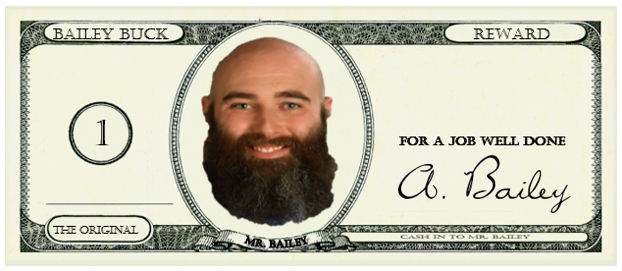Looking for fresh ideas on how to connect with your students? Who better to help spark some ideas than a fellow teacher? Andrew Bailey is a fellow technology teacher in Kentucky. With thirteen years of teaching under his belt (three years of teaching Microsoft Office Specialist certification), Bailey sure knows his stuff. We asked him to help us give realistic and actionable advice for teachers looking to improve relationships with their students. He certainly came through. Check out his ideas below.
Helping My Students Learn
Sometimes our students just do not seem to want to learn. This, of course, does not mean that they are not capable, but rather that we must work harder to get them to see the value of our class. For some students, it is simply a matter of discovering their outside interests and showing them that our curriculum supports their interests. With others we must discuss what they want to do for a career and show them how earning Microsoft certifications will help them to reach that goal. Certain students may require consistent praise with each step forward, no matter how small the stride they have taken toward completing an objective.
All these steps we take as teachers to help struggling learners revolve around one thing that we all wish we could do more often: build positive relationships with every one of our students.
Easiest Teaching Assignment?
I wasn’t always a technology teacher. In my former teaching life, I taught social studies. When I first decided to transition to the computer lab at my school, I thought it would be the world’s easiest teaching assignment. What younger person doesn’t already know more about computers than I do? I figured the kids would be showing me cool new tricks and tips while I shared with them the keys to using a computer more efficiently. What I failed to realize is that most students these days know more about their smart phones than desktop or laptop computers.
Two Key Teaching Tactics
I quickly understood that if I was going to be able to reach my kids, I was going to have to employ the two key tactics I used when I taught social studies:
- Build rapport with students every day.
- Introduce a token economy to reward student successes.
Once I implemented both components in my classroom routine, my students rapidly became the top performing scholars in our state.
Build Rapport with Students Every Day
Creating state scholars starts with the little things. I respect all my students and most importantly each knows that I honestly believe in them and care about their future successes. I always tell new teachers, “Kids won’t care about your class until they know how much you care about them”.
I greet my students each day by their first name when they enter the room. I ask them how things are going and take extra time to ensure that I have a one-minute discussion at least once a week with every child. I compliment them on little changes like new shoes, or a haircut, or even on how they have raised a grade in another class. I share with them something that I have done outside of school within the past week and ask them to do the same. I ask them what they want to be when they graduate and share steps as well as reminders along the way, so they don’t fall of track. I call their parents when they do good things in my class.
Far too often teachers only think to call home when something is amiss, but I encourage all of us to share good news no matter how small. It goes a long way in making that kid or parent’s day and builds mutual respect between all three of us.
Class Token Economy
In addition to building mutual respect, I wanted to build a reward system for my kids. I printed off dollar bill templates with my face and the phrase “Reward for a Job Well Done” on them. I signed each one before laminating them and hand them out to kids as payment for completing work, being kind, helping students who are behind, or going the extra mile. I call my reward dollars Bailey Bucks.

Kids trade Bailey Bucks for snacks, skipping an assignment, extra credit points, or even selfies with me. No, you didn’t read that wrong, I charge students Bailey Bucks for the right to take a selfie with me. I figured kids love their phones and photos, so why not make them earn something that cost me nothing? Shockingly being a member of the exclusive club of those who could take a selfie with me is one of the most popular trade in options. The only extra credit students can earn comes from trading in Bailey Bucks, so they must do their normal work to earn extra credit. I find this incentivizes them to work hard the first time instead of begging for a special project or credit at the end of the term.
Make It Your Own and Stick with It
If we all had unlimited time and far fewer students in each class, it would be so much easier to build relationships with our kiddos. Until that day comes, I urge you to take the time to get to know your kids, reward them for successes (both big and small), and forget about rushing through the curriculum. Any time spent building rapport with students will be well worth any lost instructional time because kids will work twice as hard for you once they know that you believe in them and care what happens to them outside of your classroom. These tips worked for me and they will work for you with modifications. Just give your system time to catch on and stick with it. Before you know it, all your kids will be making you proud every day.